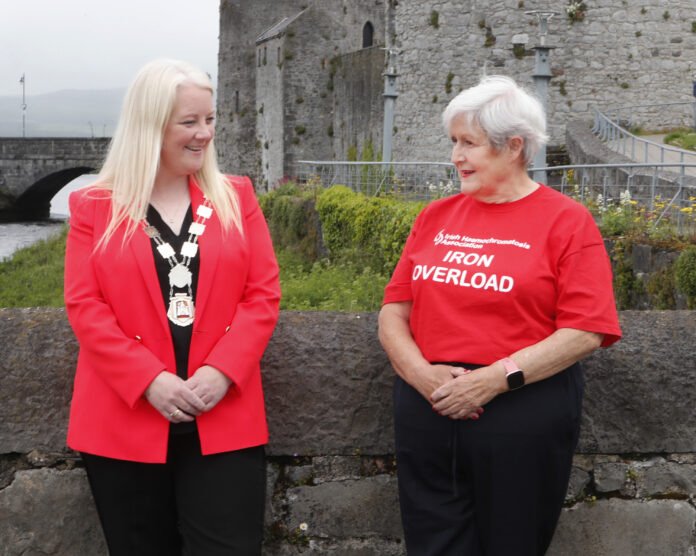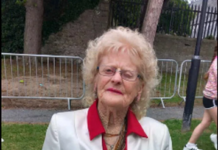
THE Irish Haemochromatosis Association Launches World Haemochromatosis Awareness Week 1 st – 7 th June 2021
Haemochromatosis, or ‘iron overload’ is Ireland’s most common genetic condition, where large amounts of iron are absorbed from the diet into vital organs such as the liver, heart and lungs and body tissue.
Early diagnosis is vital and if untreated can lead to organ damage or premature death. The Irish Haemochromatosis Association estimates there are at least 20,000 undiagnosed cases of Haemochromatosis in Ireland.
Haemochromatosis is more common in Ireland than anywhere else in the world, as one in five people carry one copy of the gene and one in every 83 Irish people carry two copies of the gene, predisposing them to develop iron overload.
This year, for World Haemochromatosis Awareness Week, 1 st – 7 th June 2021, the IHA aims to raise awareness of the condition and its symptoms to save lives.
Several City and County Councils are supporting the campaign to ‘light up red’ several iconic public buildings during World Haemochromatosis Awareness Week, including Dublin’s Mansion House, the Lord Mayor’s residence in Dublin, the Dublin Convention Centre, Fingal County Hall, Cork City Hall and Limerick City Hall and Civic Bridges.
Commenting on the awareness drive for World Haemochromatosis Awareness Week, Dr Maurice Manning, Chair of the Irish Haemochromatosis Association and who himself has Haemochromatosis says, “Ireland has more cases than anywhere else in the world and we want everyone to understand what Haemochromatosis is and how important early diagnosis is.
“Although we remain in a pandemic, it is important that people don’t ignore worrying symptoms, that they talk to their GP and arrange a blood test. Though life-threatening, once diagnosed before organ damage has occurred, Haemochromatosis can be successfully treated and patients go on to live their lives to the full, without any impact.” he said.
Professor Suzanne Norris, Consultant in Hepatology and Gastroenterology at St. James’s Hospital says, “Ill-health from Haemochromatosis and the development of serious complications such as cirrhosis can be prevented by simple treatment and life expectancy in treated non-cirrhotic patients is normal. Early diagnosis is therefore critical.”
Dr John Ryan, Consultant in Hepatology and Gastroenterology at Beaumont Hospital, comments, “Ireland has the highest rates of Haemochromatosis in the world. Haemochromatosis is an inherited condition, where the body cannot switch off iron absorption and iron build up leads to life-threatening organ damage.
“If picked up early enough it is entirely treatable, and individuals may also donate blood through the Irish Blood Transfusion clinics, which is then put to good use.” he added.
The Irish Haemochromatosis Association was established over 21 years ago. Voluntary Board
Member, Margaret Mullett, has worked tirelessly over many years with the IHA and supports patients and people who are newly diagnosed, through the charity’s Helpline. Margaret who is Dublin-based former chemistry teacher, sadly lost her husband, Dr George Mullet, to the condition.
He was diagnosed with Haemochromatosis just six weeks before he died in June 2000, awaiting a heart transplant in the Mater Hospital.
All five adult children were then tested and were diagnosed with Haemochromatosis – by a strange coincidence Margaret also tested positive for Haemochromatosis. Margaret and all five siblings have received treatment and are living their lives unaffected by the condition.
A simple blood test to check a patient’s iron levels can confirm or rule out iron overload, Once people are diagnosed, the treatment is simple with regular removal of blood, similar to donating blood. Early detection is vital to avoid organ damage and live a normal health life after treatment.
You can learn more about specific symptoms, testing, and treatment on the Association’s website, as well as support the work of the Irish Haemochromatosis Association and its Helpline, by donating via the Text to Donate service, Text ‘IRON’ to 50300 or by making a donation on the charity’s website: www.haemochromatosis-ir.com










